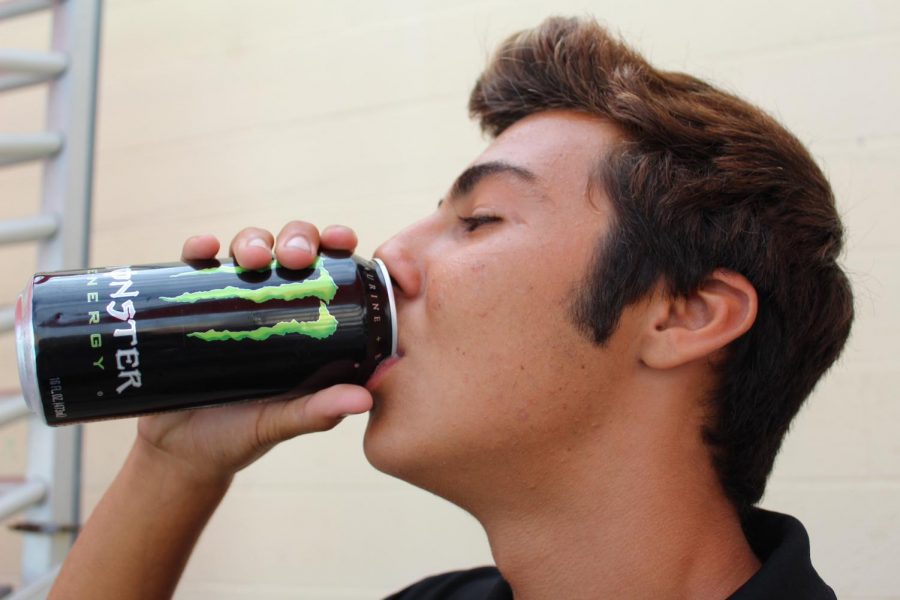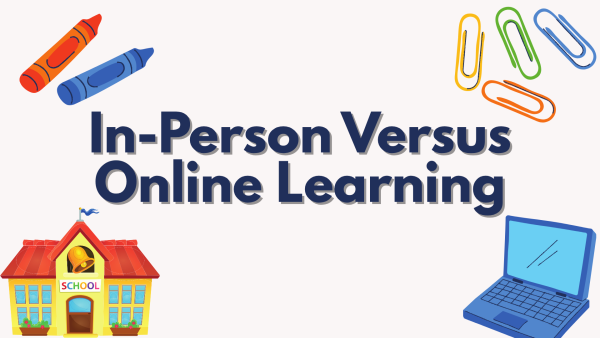Energy Drinks: Effects on the Mind and Body
For many people, energy drinks serve as a way to deliver themselves a quick boost and can surprisingly have some benefits if the right amount is consumed. But like most things, there are negative effects that go along with the positives. According to the National Center for Complementary and Integrative Health (NCCIH), energy drinks are the most popular alimentary supplement in the United States, with the consumers being primarily young adults and teenagers. People drink them before sports, to wake up in the morning, stay awake, or to finish work, while others simply enjoy the taste.
Brands like Redbull, Monster, Rockstar, Bang, Mountain Dew Kickstart, and many more have created different flavors to grab consumer’s attention to buy their product. Along with this, companies have curated their own brand identity and created memorable slogans, such as, “Redbull gives you wings” or “Unleash the beast” by Monster. Their advertising doesn’t stop there though; they hire famous figures in the media for promotion. Conor McGregor is seen in a 2017 Monster commercial claiming the drink gives athletes strength, and Kim Kardashian collaborated with Hype energy drink in 2015. The high energy portrayed in the advertisements may be accurate, however, the public is not shown the long term effects that energy drinks can have. When people think of energy drinks, brands such as Gatorade, Propel, Powerade, and Vitamin Water, come to mind. However, unlike drinks such as Monster or Rockstar, they do not contain caffeine and tend to have lower percentages of sodium, calories, and other ingredients. People need to understand that energy drinks have both positives and negatives. On one side, the ingredients can help increase energy levels, and on the other, it raises blood pressure and has negative effects on the heart.
The global energy drinks market is projected to be worth $61 billion by 2021. Their key to success is not just through advertising or their vast array of flavors, but the ingredients companies incorporate in their drinks to provide people with a sense of alertness and energy. The majority of energy drinks contain caffeine, taurine, guarana, B vitamins, ginseng, L-carnitine, and sugars as their main ingredients. The amount of caffeine in each can range from 70 to 250 milligrams, which may not seem high, but if large amounts are consumed, it can be dangerous. Some side effects may trigger headaches, nausea, high blood sugar, and interfere with pregnancies and sleep.
Sugar, a large component of these types of beverages, is not the healthiest item due to its higher calorie content, which is then stored in fat cells. Having a small portion of natural sugars daily is reasonable, but extensive amounts can lead to weight gain, tooth decay, and other health issues. The sugar substances put in drinks usually consist of corn syrup or high levels of pure sugar which provide the consumer an ample source of energy.
Guarana, ginseng, and ginkgo biloba, are substances used in some energy drinks. Guarana is a plant native to South America and is consumed to raise alertness; it contains three to four percent caffeine and other molecules as well. In addition to acting as an antidepressant, ginkgo biloba is known to improve one’s memory. This ingredient is not often included in many energy drinks and, even if it was, people would see much of a difference, as there is not enough added to make a change. Ginseng, the caffeinated substance found in green tea, can have health benefits such as reducing inflammation, boosting immune systems, and even potential benefits against cancer. Ginseng is believed to reduce stress and trigger the pituitary and hypothalamic glands. The average amount put in energy drinks is about 200 milligrams, when 2,7000 milligrams is the maximum amount that should be consumed. These three herbs are better separate than together. When combined with sugar and caffeine, it can make the substances dangerous and sometimes causes kidney failure, high blood pressure, and dehydration.
Another ingredient is taurine, which is an amino acid that can be helpful in some of the body’s metabolic processes. With the right amount, taurine can raise the performance of heart muscle contractions and improve oxygen supply to heart cells which lowers cholesterol. The problem is that human bodies already produce enough taurine, so over supplementing can result in severely low blood pressure. L-carnitine is very similar to taurine in the sense that both are amino acids; if an individual consumes too much, they may experience the same side effects. Natural B vitamins are found in everyday foods, such as whole grains, meat, and dairy products. Many might have the misconception that over injesting B vitamins would not be a big deal, but it can cause damage to the skin, liver, and vision. With all of the ingredients mentioned, energy drinks like Monster, Bang, and Redbull are able to deliver short-term energy to their consumers.
The majority of individuals drink energy drinks in hopes to raise their level of energy, as clearly shown by the name. However, the true question is, do energy drinks really give people energy? Well, for some, this is the case because energy drinks include caffeinated and energy enhancing substances that may give the user a boost of energy when feeling tired or run down.
Energy drinks can also help better the immune system of a user that may be feeling ill, which can help provide a consumer with the energy to get their day started or the drive to begin a workout. For those with deficit disorders, energy drinks may not have the same effect, as the drink can assist the user to focus and make them more calm than energetic. Huntington Beach High School Girls Waterpolo Coach, Jacob Moore, is an avid consumer of energy drinks. He typically drinks anywhere from three to five energy drinks per week, with his number one choice being Monster Energy: Green Import edition. Coach Moore has Attention Deficit Hyperactivity Disorder (ADHD) and attests to “feel[ing] calmer and more focused when drinking an energy drink.” Everyone is different, therefore, there are going to be different reactions to energy drinks. A survey conducted by students of all grades at Huntington Beach High School showed that out of 387 students, 121 drink energy drinks. About 91 percent of students consume one to five cans a week, while the other eight percent drink more than five times a week. Although 45.8% of students had the intended experience of feeling energetic, the other half felt tired, drowsy, or jittery; 75 people did not feel it had an effect on them.
In all, people need to be aware of what they put in their bodies. No matter the reason, there are always alternatives to drinking energy drinks, such as protein shakes and green teas. With the right proportions, certain ingredients in energy drinks can help people in a positive way, but if people are not cautious, they can be extremely harmful.
Your donation will support the student journalists of Huntington Beach High School. Your contribution will allow us to cover our annual website hosting costs.
Thank you for supporting our program!







